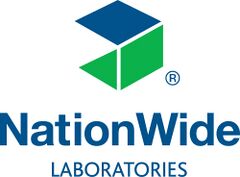Canine hypoadrenocorticism (Addison’s disease)
Introduction
Primary hypoadrenocorticism results when destruction of 90% of both the adrenal cortices leads to a clinical deficiency of all adrenal cortical hormones. The ACTH stimulation test is used to confirm a diagnosis. It is also useful to measure the Na:K ratio as evidence for mineralocorticoid deficiency but a low ratio is not seen in all cases of primary hypoadrenocorticism at initial presentation. Animals with secondary hypoadrenocorticism (deficient pituitary production of ACTH) are not expected to have electrolyte disturbances.
ACTH stimulation test
In dogs with primary hypoadrenocorticism basal levels of cortisol are low and there is little if any response to ACTH stimulation (see HAC above for protocol). Post ACTH cortisol concentrations <50nmol/l support the diagnosis but typically, much lower results are obtained. False positive diagnoses occur in animals which have received glucocorticoid therapy including oral, injectable and topical (eye, ear and skin) preparations. For confirmation of primary hypoadrenocorticism in dogs that have received corticosteroids, consider measuring aldosterone instead of, or in addition to, cortisol. Prednisolone, prednisone and hydrocortisone will cross-react in the cortisol assay and give falsely elevated results. Such therapies should be avoided in the 24 to 36 hours prior to the test. Oral dexamethasone does not have this effect so it can safely be used prior to an ACTH stimulation test without causing assay interference. The stimulation test should be performed within 2-3 hours of drug administration.
Test Code - Please visit www.nwlabs.co.uk or see our current price list for more information
Endogenous ACTH
ACTH concentrations can be useful in distinguishing primary from secondary hypoadrenocorticism. Dogs with primary disease have very high levels of ACTH while individuals with secondary hypoadrenocorticism have low or undetectable concentrations. Special sampling procedures are required.
Test Code - Please visit www.nwlabs.co.uk or see our current price list for more information
Therapeutic monitoring
The laboratory monitoring of primary hypoadrenocorticism focuses on electrolyte status. There is no value in repeating the ACTH stimulation test in confirmed cases.
Test Code - Please visit www.nwlabs.co.uk or see our current price list for more information
Aldosterone
Measurement of aldosterone is required to demonstrate mineralocorticoid deficiency and allows differentiation between primary and secondary hypoadrenocorticism.
Aldosterone is the most important mineralocorticoid and it is produced by the zona glomerulosa of the adrenal cortex. Release of aldosterone is mainly controlled by the renin-angiotensin system (RAS) and by potassium levels in the blood. Aldosterone levels may be useful in the differential diagnosis of primary and secondary hypoadrenocorticism and to assess the degree of destruction of the mineralocorticoid areas of the adrenals.
Persistent hypokalaemia (<3.0mmol/l) may be due to hyperaldosteronism. Hyperaldosteronism may be primary or secondary. Primary hyperaldosteronism (Conn’s syndrome) is rare in the dog and cat and is usually caused by a small, solitary, aldosterone producing adenoma of the adrenal cortex. Secondary hyperaldosteronism is more common and is caused by continued stimulation of the RAS. Because exogenous glucocorticoids will have little or no effect on the RAS, aldosterone production is not affected by them. Measuring the aldosterone response to ACTH instead of (or in addition to) cortisol, can confirm primary hypoadrenocorticism in dogs that have already received glucocorticoid therapy. Measurement of cortisol alone risks a false positive diagnosis due to the negative feedback effects of exogenous steroid therapy (including topical skin, eye and ear preparations) on endogenous glucocorticoid production. Aldosterone levels can be measured in the same samples as cortisol and the measurement of aldosterone pre and post ACTH stimulation provides the most information on the mineralocorticoid producing ability of the adrenals.
Principle use of the aldosterone assay:
- Confirming primary hypoadrenocorticism in an animal which has already been receiving corticosteroid therapy prior to diagnosis
- Differentiating primary from secondary hypoadrenocorticism
- Investigating hypokalaemia
- Assessing renin-angiotensin dependency in cardiac patients prior to ACE inhibition
- Assessing mineralocorticoid effect of anti-adrenal therapy (trilostane, mitotane)
| Cortisol (nmol/l) | Aldosterone (pmol/l) | |
|---|---|---|
| Pre ACTH | <20 | <20 |
| Post ACTH | <20 | <20 |
Consistent with primary hypoadrenocorticism (adrenocortical destruction)* – even if already receiving symptomatic glucocorticoid therapy
| Cortisol (nmol/l) | Aldosterone (pmol/l) | |
|---|---|---|
| Pre ACTH | <20 | Normal |
| Post ACTH | <20 | Normal |
Consistent with secondary (pituitary) hypoadrenocorticism OR exogenous glucocorticoid therapy (including topical skin, eye and ear preparations)
*In the case of trilostane therapy, the ACTH response reflects adrenal steroidogenesis at the time of the test only. Due to the temporary and reversible action of trilostane, production may be greater later in the day. Unlike the case of mitotane, a flat cortisol or aldosterone response does not necessarily mean that the patient is unable to manufacture steroid hormones.
